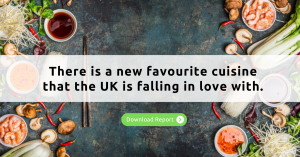SEO. A practice that has completely changed the face of marketing in the two decades of its existence and radically altered how marketing budgets are spent. But is it here to stay?
We can all agree that ecommerce is one of the fastest growing industries of all time seeing a massive growth in the last decade and predicted to make up 22% of global retail sales by 2023. But ecommerce success is more than having a beautiful website, you need a healthy amount of traffic to your online store. This is where SEO comes in. SEO is one of the 3 leading traffic drivers alongside direct-to-site and email marketing.
Not convinced? Read on to find out why this marketing strategy should not be ignored.
Google is the most visited website in the world with 92.5 billion visits every month.
Available in almost every country in the world, it is easy to see why Google dominates the search engine market holding over 92% of the market share. Whereas other search engines like Bing and Yahoo hold less than 5% of the total market share combined.
Nearly 85% of consumers conduct some form of online research before making a purchase.
This emphasises the importance of being visible on search engines such as google. It does not matter if the product or service is to be eventually purchased online or by visiting a retailer, the initial step occurs via the consumers’ search engine.
Over 50% of all global web traffic is generated from mobile devices.
Basically, half of the searches made worldwide come from a smartphone. It is no surprise that many companies now view mobile optimisation as a valuable investment. Especially considering that 79% of consumers have made an online purchase on their mobile device in the last six months.

92% of all search traffic clicks come from the first page of a Google search.
Visibility is everything. By contrast, the second page captures less than 6% of clicks. That’s not all. The first five results of a search are likely to receive more than 67% of clicks while the remaining five results receive less than 4% of the clicks.
Bounce rates and conversion rates of a website are largely affected by load times.
In fact, the average bounce rate of a page loading within 2 seconds is 9%. But this changes drastically and increases by up to 38% if it is 5 seconds.
Similarly, conversion rates are dramatically influenced by page loading time, reaching its lowest at a 5 second load time. A high conversion rate is indicative of successful marketing and web design so to improve conversions on your website, aim for a 0-4 second load time.
76% of mobile “near me” searches result in a visit to a related store on the very same day.
The growth potential via local SEO is enormous and most companies use Google My Business (GMB) to tap into this market. And the results are optimised when the GMB tool is managed effectively.

A business that has more than 100 images on their GMB listing will see a 2000% increase in direction requests, a 1000% increase in website clicks and 500% more calls than the average business!
And a good review can work wonders creating an uplift of 18% in sales. According to the latest online review statistics, 76% of consumers say they trust the reviews they read online as much as a personal recommendation.
Content marketing gets 3 times more leads than paid search advertising.
This explains why content marketers increased their annual market budget spend on content creation by an average of 56% over the past 12 months. Making content creation an important part of their overall marketing strategy.
Content quality and length are also important factors to be considered. 73% of marketers create content that is focused on audience education as opposed to promotional messaging. And articles that contain an upwards of 3000 words get 3 times more traffic and 4 times more shares than shorter articles.
So, do businesses need SEOs? No doubt 2020 brought with it a unique curveball that forced everyone to think differently. And the world of marketing was no less affected. But that just served to underline the importance of SEO and the ever-increasing dominance of digital marketing.
But for it to remain a potent digital marketing strategy, it seems a shift to more strategic SEO will be critical to stay relevant.
SEO enhances visibility, creates awareness, generates brand equity, builds trust, and allows potential customers to find the answers (or products/ services) they seek.
Ultimately it seems that most businesses view SEO as a valuable investment that will prove to be worth that investment.
If you are interested in taking your business and brand to dizzying heights through creatively customised digital marketing, reach out to the team at Serendipity.






